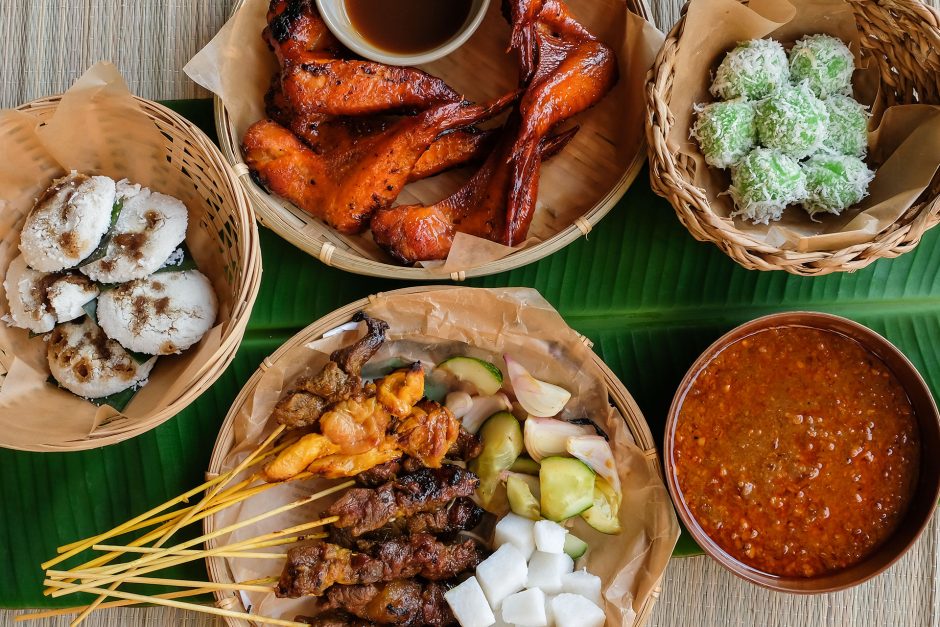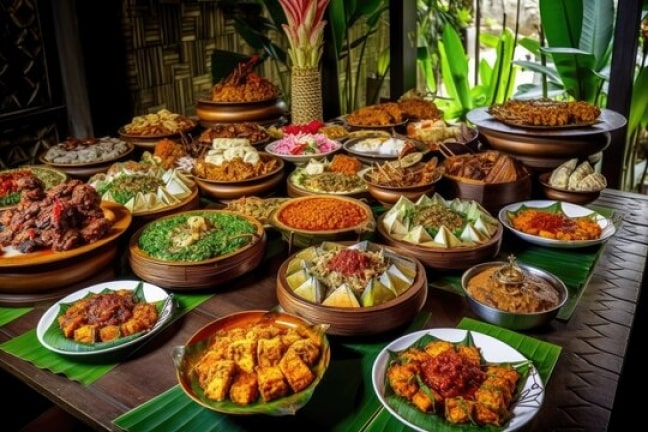Malaysia, a country celebrated for its cultural diversity, boasts a cuisine that is just as varied and vibrant as its people. The culinary landscape of Malaysia is a melting pot of Malay, Chinese, Indian, and indigenous influences, resulting in a rich tapestry of flavors and dishes that are unique to this Southeast Asian nation. Let’s embark on a culinary journey to explore the diverse and delectable flavors of Malaysian cuisine.
The Essence of Malaysian Cuisine
Spices and Aromatics
At the heart of Malaysian cooking lies a generous use of spices and aromatics. Key ingredients include lemongrass, ginger, turmeric, galangal, and pandan leaves, all of which contribute to the distinctive and fragrant flavor profiles. Coconut milk is another staple, lending a rich and creamy texture to many dishes.
Rice: The Staple Food
Rice is the cornerstone of Malaysian meals, often served in various forms. Nasi Lemak, the national dish, is a prime example, featuring rice cooked in coconut milk and served with an array of accompaniments like sambal, fried anchovies, boiled eggs, and peanuts.
Iconic Malaysian Dishes
Nasi Lemak
No discussion of Malaysian cuisine is complete without mentioning Nasi Lemak. This dish perfectly encapsulates the essence of Malaysian flavors – a harmonious blend of creamy, spicy, and savory elements. It’s a common sight at breakfast tables, but it’s enjoyed throughout the day.
Rendang
Rendang is a slow-cooked dry curry, traditionally made with beef, that is rich in spices and coconut milk. This dish, often served during festive occasions, boasts a deep and complex flavor profile, with the meat tender and infused with the aromatic spices.
Laksa
Laksa is a spicy noodle soup with two main variants: Curry Laksa and Assam Laksa. Curry Laksa has a creamy coconut milk base, while Assam Laksa features a tangy, fish-based broth. Both versions are packed with flavor and are beloved by locals and visitors alike.
Satay
Satay consists of skewered and grilled meat, usually served with a flavorful peanut sauce. This popular street food is marinated in a blend of spices, making each bite both tender and intensely flavored. It’s a favorite snack or appetizer that showcases the influence of Malay cuisine.
Regional Specialties
Penang: Char Kway Teow
The island of Penang is famous for Char Kway Teow, a stir-fried noodle dish made with flat rice noodles, prawns, eggs, Chinese chives, and bean sprouts. Cooked over high heat, it has a distinctive smoky flavor, often enhanced with a dash of soy sauce and chili paste.
Sarawak: Sarawak Laksa
From the state of Sarawak comes Sarawak Laksa, a unique take on the traditional laksa. This version features a base of sambal belacan (shrimp paste), coconut milk, and a variety of spices, resulting in a rich and aromatic broth served with rice vermicelli and garnished with fresh herbs.
Kelantan: Nasi Kerabu
Nasi Kerabu is a vibrant blue rice dish from the state of Kelantan, colored naturally with butterfly pea flowers. It is typically served with a variety of herbs, salted egg, fried fish, and a spicy coconut-based sauce, creating a visually stunning and flavorful meal.
Sweet Treats
Cendol
Cendol is a popular dessert made with shaved ice, green rice flour jelly, coconut milk, and palm sugar syrup. It’s a refreshing treat, perfect for Malaysia’s tropical climate, offering a delightful combination of sweet and creamy flavors.
Kuih
Kuih refers to a variety of bite-sized snacks and desserts that are usually steamed or baked. Made from ingredients like rice flour, coconut milk, and pandan leaves, kuih come in an array of colors, shapes, and textures, each offering a unique taste experience.
Conclusion
Malaysian cuisine is a feast for the senses, characterized by its bold flavors, aromatic spices, and diverse influences. Whether you are savoring the creamy richness of Nasi Lemak, the spicy kick of Laksa, or the smoky allure of Char Kway Teow, each dish tells a story of Malaysia’s rich cultural heritage. Exploring Malaysian cuisine is not just about enjoying delicious food; it’s about experiencing the heart and soul of Malaysia itself.



